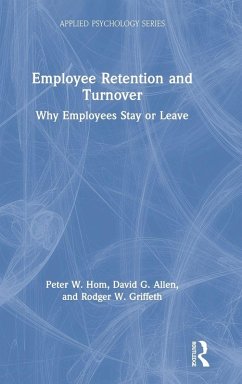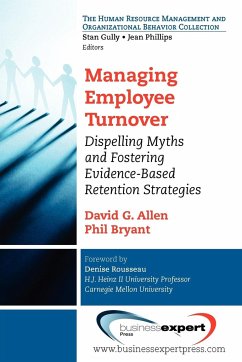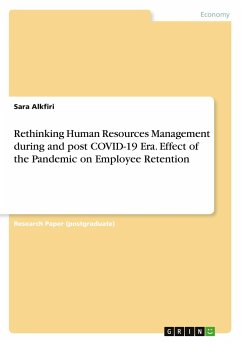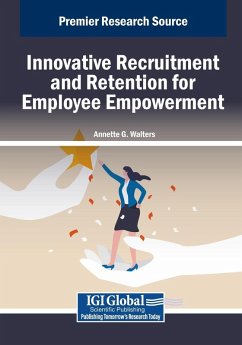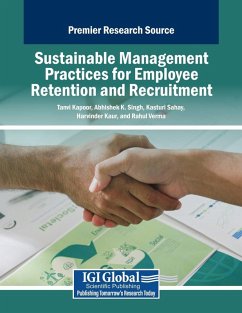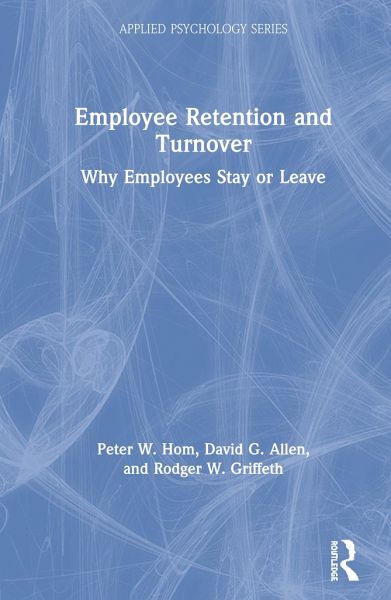
Employee Retention and Turnover
Why Employees Stay or Leave
Versandkostenfrei!
Versandfertig in 1-2 Wochen
60,99 €
inkl. MwSt.
Weitere Ausgaben:

PAYBACK Punkte
30 °P sammeln!
This exploration of what employee turnover is, why it happens, and what it means for companies and employees draws together contemporary and classic theories and research to present a well-rounded perspective on employee retention and turnover. The book uses models such as job embeddedness theory, proximal withdrawal states, and context-emergent turnover theory, as well as highlights cultural differences affecting global differences in turnover. Employee Retention and Turnover contextualises the issue of turnover, its causes and its consequences, before discussing underrepresented antecedents ...
This exploration of what employee turnover is, why it happens, and what it means for companies and employees draws together contemporary and classic theories and research to present a well-rounded perspective on employee retention and turnover. The book uses models such as job embeddedness theory, proximal withdrawal states, and context-emergent turnover theory, as well as highlights cultural differences affecting global differences in turnover. Employee Retention and Turnover contextualises the issue of turnover, its causes and its consequences, before discussing underrepresented antecedents of turnover, key aspects of retention and methods for regulating turnover, and future research directions. Ideal for both academics and advanced students of industrial/organizational psychology, Employee Retention and Turnover is essential for understanding the past, present, and future of turnover and related research.





